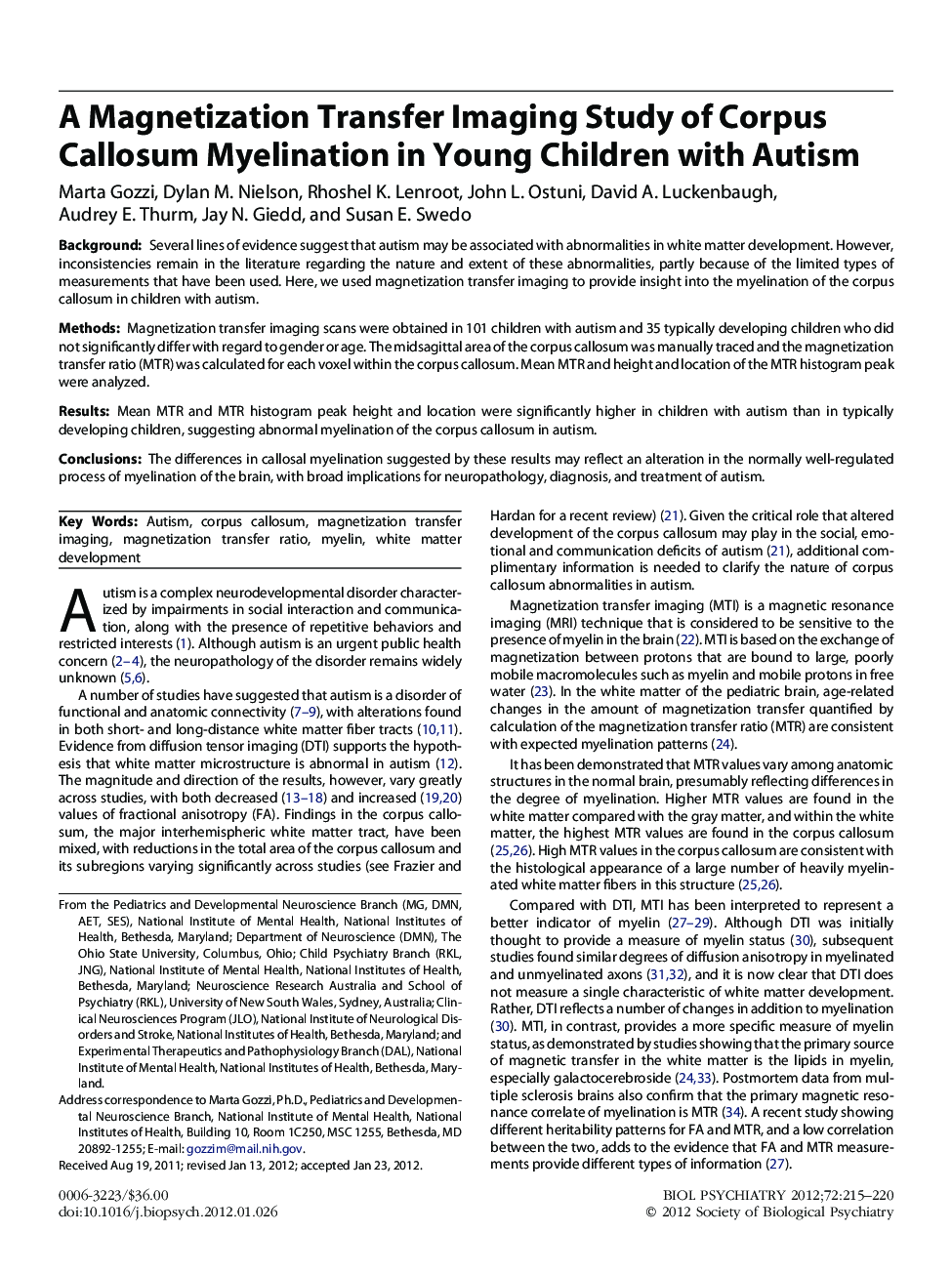| Article ID | Journal | Published Year | Pages | File Type |
|---|---|---|---|---|
| 4178783 | Biological Psychiatry | 2012 | 6 Pages |
BackgroundSeveral lines of evidence suggest that autism may be associated with abnormalities in white matter development. However, inconsistencies remain in the literature regarding the nature and extent of these abnormalities, partly because of the limited types of measurements that have been used. Here, we used magnetization transfer imaging to provide insight into the myelination of the corpus callosum in children with autism.MethodsMagnetization transfer imaging scans were obtained in 101 children with autism and 35 typically developing children who did not significantly differ with regard to gender or age. The midsagittal area of the corpus callosum was manually traced and the magnetization transfer ratio (MTR) was calculated for each voxel within the corpus callosum. Mean MTR and height and location of the MTR histogram peak were analyzed.ResultsMean MTR and MTR histogram peak height and location were significantly higher in children with autism than in typically developing children, suggesting abnormal myelination of the corpus callosum in autism.ConclusionsThe differences in callosal myelination suggested by these results may reflect an alteration in the normally well-regulated process of myelination of the brain, with broad implications for neuropathology, diagnosis, and treatment of autism.
